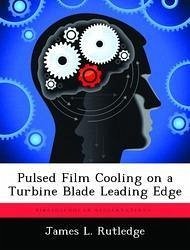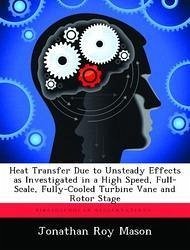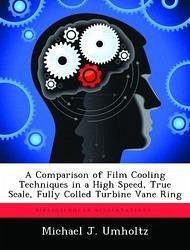
An Experimental Investigation Studying the Influence of Dimples on a Film Cooled Turbine Blade Leading Edge
Versandkostenfrei!
Versandfertig in über 4 Wochen
52,99 €
inkl. MwSt.

PAYBACK Punkte
26 °P sammeln!
An investigation was conducted to examine the effect of a row of cylindrical surface dimples in reducing the heat load on a turbine blade leading edge model. The models consisted of a foam cylindrical leading edge with a flat afterbody fabricated from Plexiglass. A single coolant hole was located 21.5- from the leading edge, angled 20- to the surface and 90- from the streamwise direction. The leading edge diameter to hole diameter ratio was D/d = 18.7. A row of seven dimples was placed upstream of one of the coolant holes. Infrared thermography techniques were used to determine the adiabatic e...
An investigation was conducted to examine the effect of a row of cylindrical surface dimples in reducing the heat load on a turbine blade leading edge model. The models consisted of a foam cylindrical leading edge with a flat afterbody fabricated from Plexiglass. A single coolant hole was located 21.5- from the leading edge, angled 20- to the surface and 90- from the streamwise direction. The leading edge diameter to hole diameter ratio was D/d = 18.7. A row of seven dimples was placed upstream of one of the coolant holes. Infrared thermography techniques were used to determine the adiabatic effectiveness, ? and heat transfer coefficient, h, distributions so that the net heat flux reduction could be calculated. Freestream conditions consisted of Reynolds numbers of 60,000 and 30,000 at both low turbulence and high turbulence.











![The Psychology of Learning [electronic Resource]: an Experimental Investigation of the Economy and Technique of Memory Cover The Psychology of Learning [electronic Resource]: an Experimental Investigation of the Economy and Technique of Memory](https://bilder.buecher.de/produkte/65/65487/65487305n.jpg)


